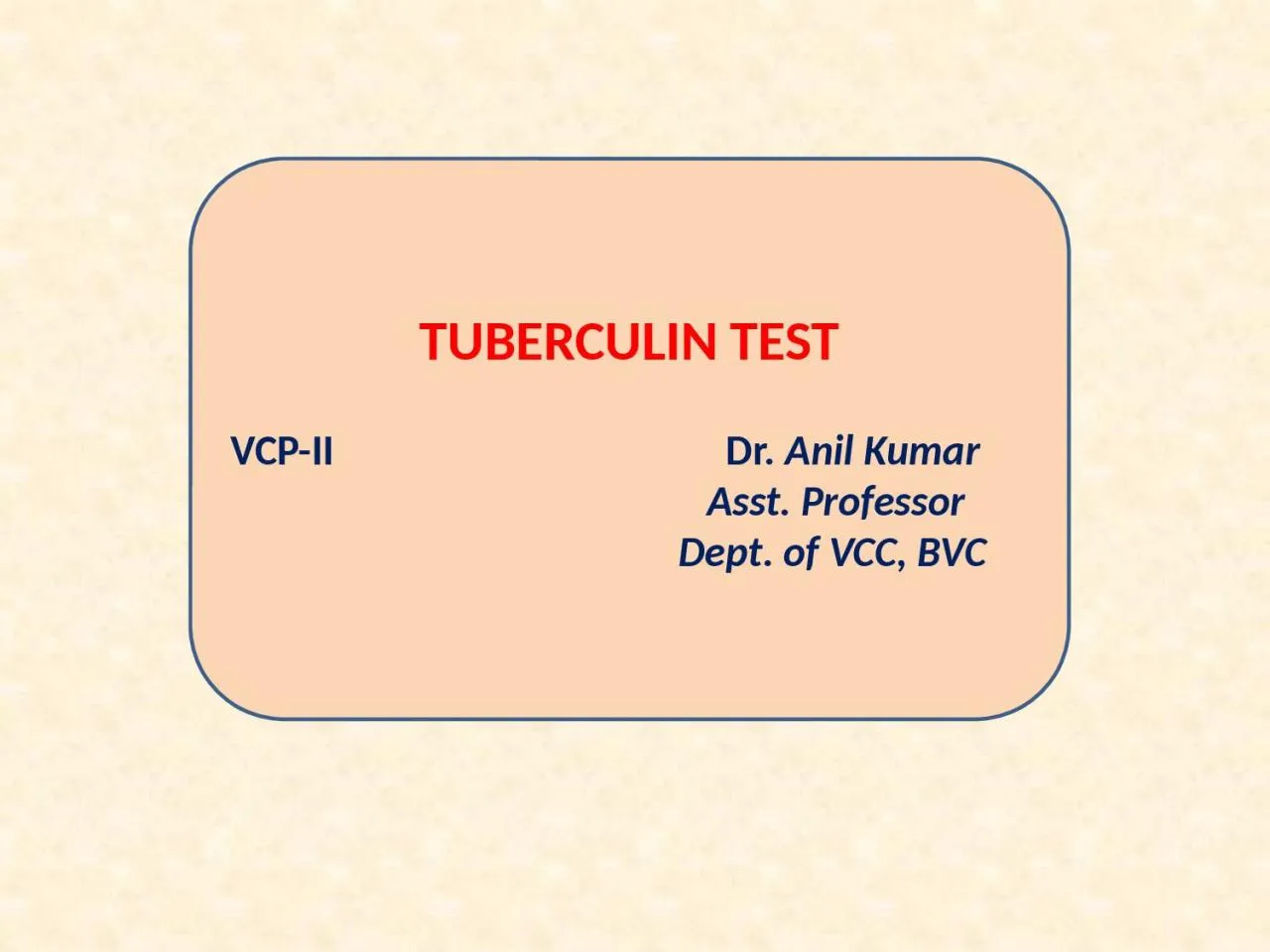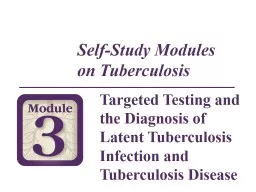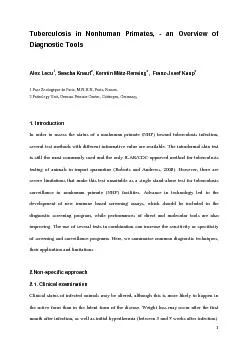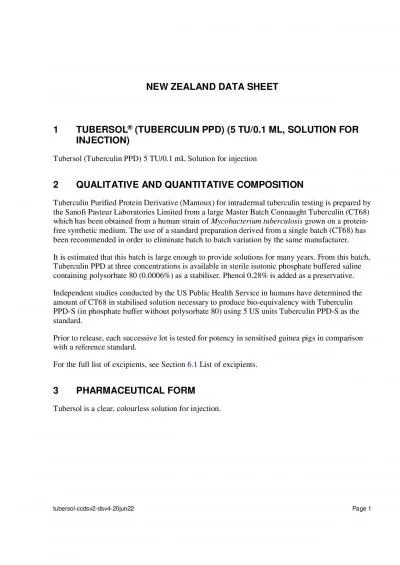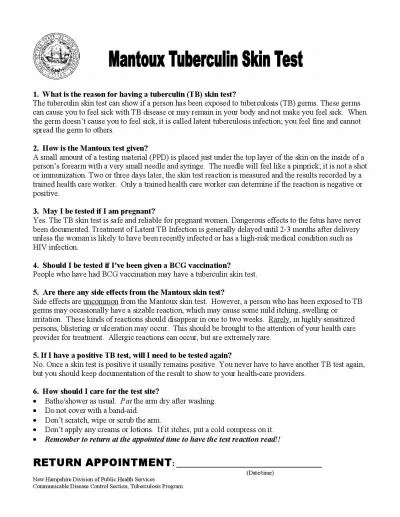PPT-TUBERCULIN TEST VCP-II
Author : esther | Published Date : 2022-06-01
Dr Anil Kumar Asst Professor Dept of VCC BVC TUBERCULIN TESTS U sed for antemortem diagnosis of latent and active TB in man and animals for more than 100 years
Presentation Embed Code
Download Presentation
Download Presentation The PPT/PDF document "TUBERCULIN TEST VCP-II" is the property of its rightful owner. Permission is granted to download and print the materials on this website for personal, non-commercial use only, and to display it on your personal computer provided you do not modify the materials and that you retain all copyright notices contained in the materials. By downloading content from our website, you accept the terms of this agreement.
TUBERCULIN TEST VCP-II: Transcript
Download Rules Of Document
"TUBERCULIN TEST VCP-II"The content belongs to its owner. You may download and print it for personal use, without modification, and keep all copyright notices. By downloading, you agree to these terms.
Related Documents

